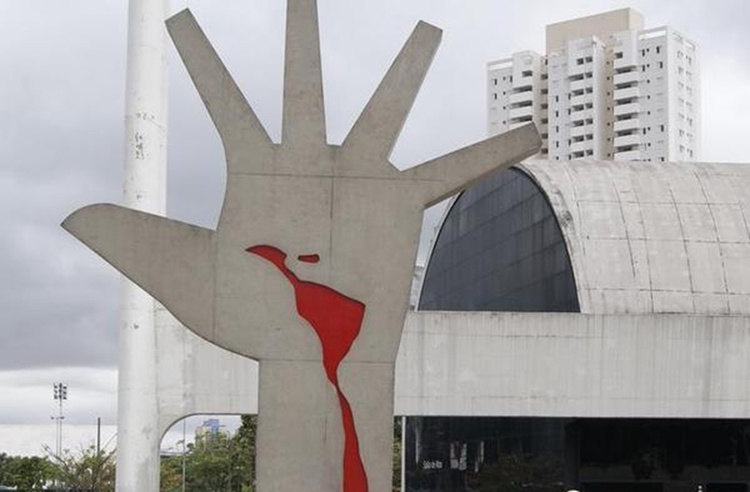
10 iconic works by Oscar Niemeyer, genius of modern architecture
Brazilian architect Oscar Niemeyer was one of the most influential figures in modern world architecture. Born on December 15, 1907, Oscar Niemeyer from Rio de Janeiro had a brilliant professional career, creating architectural works of great symbolic value in Brazil and abroad. Niemeyer's style is marked by his preference for curves, as most of his signature buildings carve curvilinear shapes in concrete. About to turn 105 years old, Niemeyer passed away on the night of December 5, 2012, but his legacy will continue to live on through the more than 600 buildings he designed that are spread across the world. His greatest masterpiece is considered to be the design of the city of Brasília, designed by him in the 1950s at the request of then president Juscelino Kubitschek. Find out which are the ten most emblematic works signed by the late architect
summary
National Congress
Niterói's flying saucer
Pampulha Architectural Complex
UN Headquarters
Mondadori publishing house headquarters
Brasília Metropolitan Cathedral
Latin America Memorial
Oscar Niemeyer museum
Copan Building
Catwalk Professor Darcy Ribeiro
National Congress
For us Brazilians, it is difficult to choose “the” most important work by Niemeyer, after all his buildings are spread across several states and are postcards of some of the most important cities in the country. However, due to its symbolic value, the building of National Congress, designed by the architect during the construction of Brasília and inaugurated in 1960, may occupy first place in this ranking. We are used to seeing this very familiar image whenever the subject is Brazilian politics. The building formed by two twin towers and two domes (one of them inverted) in the shape of a semi-circle is an icon of Brazil in the world, due to the originality of its shapes and, above all, because it is the symbol of the country's capital. Along with the buildings of the Planalto Palace and the Federal Supreme Court (also created by Niemeyer), the National Congress makes up the complex called Praça dos Três Poderes. The three monumental constructions represent the Executive, the Judiciary and the Legislative.
Niterói's flying saucer
Nicknamed the “flying saucer of Niterói”, the Niterói Contemporary Art Museum (also known as MAC) was inaugurated in 1996. Its imposing presence, like a futuristic sentinel over the Boa Viagem Mirante, is enough to leave anyone in awe. fallen. Its design allows visitors to enjoy the panoramic view of Niterói's waterfront from different angles, through the ring of windows that surround the gigantic building — also seen in the shape of a cup by many people. It goes without saying that MAC is one of the city's postcards and a source of pride for all Niteroi residents.
Pampulha Architectural Complex
Lagoa da Pampulha, in Belo Horizonte, is home to the most famous architectural complex in the capital of Minas Gerais. It is made up of three works designed by Oscar Niemeyer in the 40s. They are: the Pampulha Art Museum, the Casa do Baile, the Iate Tênis Clube and the Church of São Francisco de Assis, which is the main postcard of the city. The “little church of Pampulha”, as it is affectionately called by the people of Minas Gerais, is a work of art sculpted in concrete: the 14 panels inside are signed by Cândido Portinari and depict the Via Sacra. The complex is still surrounded by the gardens of the famous artist
UN Headquarters
Oscar Niemeyer was one of 12 architects selected to create the design for the headquarters of the United Nations, located in New York City. The final project chosen was that of Niemeyer, who worked together with the French-Swiss architect Le Corbusier to carry out the work. Both had some disagreements about the volume of the general assembly, but managed to complete the project in 1952, adopting an intermediate solution.
Mondadori publishing house headquarters
The headquarters of the Mondadori publishing house (1968), in Milan, Italy, is one of the famous buildings designed by Oscar Niemeyer. Suspended by a structure of irregularly spaced columns, the monumental glass box that makes up the building surprises with the incredible apparent lightness of its forms.
Brasília Metropolitan Cathedral

Cornerstone of Brasilia, the Metropolitan Cathedral was designed by Oscar Niemeyer in 1958, but its inauguration did not take place until 1970, due to legal obstacles. The ship was designed so that it could look the same from all angles. At the entrance, four imposing bronze sculptures symbolize the evangelists Saint John, Saint Matthew, Saint Mark and Saint Luke. The church is supported by 16 hyperboloid columns and its interior is adorned with sculptures of three angels, suspended by steel cables. The ceiling of the nave has a stained glass window made up of 16 pieces of fiberglass.
Memorial da América Latina

Inaugurated in 1989 in the Barra Funda neighborhood of São Paulo, the architectural complex of the Memorial da América Latina celebrates the links between Latin American peoples and is another of architect Niemeyer's famous projects. Its cultural proposal was designed by anthropologist Darcy Ribeiro at the request of Niemeyer. It houses buildings such as an exhibition hall, a library, a gallery and an amphitheater. The sculpture A Mão, by Niemeyer, which presents a graphic record of the map of Latin America (in the part with the red spot) is the symbol of the complex, in addition to being one of the main icons of the urban landscape of São Paulo.
Oscar Niemeyer Museum

On November 22, 2002, the Oscar Niemeyer Museum was inaugurated in Curitiba. Dedicated to exhibitions of Visual Arts, Architecture, Urban Planning and Design, the space has around 35 thousand square meters of built area and more than 17 thousand square meters of exhibition area, making it considered the largest museum in Latin America. Due to its unusual shape, which resembles a large concrete and glass eye erected on a quadrangular base, the museum is popularly called the Eye Museum or Niemeyer Eye. Its enigmatic architecture attracts Brazilian and foreign tourists. In 2012, MON was chosen one of the 20 most beautiful museums in the world by the North American guide Flavorwire, in addition to being the most visited tourist attraction in Curitiba, according to the travel website TripAdvisor.
Copan Building

Designed in the 1950s by architect Oscar Niemeyer with the collaboration of Carlos Alberto Cerqueira Lemos, the Copán building was completed in 1966. Located in the center of São Paulo, it is the largest reinforced concrete structure in the country, in addition to being considered the largest residential building in Latin America. The sinuous building of Copán, with its 1,160 apartments spread over six blocks, is a concrete representation of the diversity of the metropolis, where families, companies, small businesses and even a church (a space initially created to house a cinema) coexist. Copán's numbers are curious: the building is 115 meters high, 35 floors (in addition to two basements with 221 car parking spaces), 20 elevators in total and around two thousand inhabitants.
Catwalk Teacher Darcy Ribeiro

The Professor Darcy Ribeiro Passarela, better known as Passarela do Samba, Marquês de Sapucaí or Sambódromo do Rio de Janeiro, was designed by Niemeyer in 1983 with the aim of offering the city a permanent space for the traditional parade of samba schools. It has become one of the most popular tourist spots in Rio, attracting thousands of visitors during Carnival time. The immense concrete sculpture called Praça da Apoteose is an emblem of the Rio Carnival and marks the entrance where the samba schools begin to parade. The Sambódromo complex is also used throughout the year to house a school, which operates in the box galleries. It is also a space for musical performances. The Hollywood Rock festival was held there, as well as shows by Kiss, The Rolling Stones, Roger Waters (Pink Floyd), Avril Lavigne, Pearl Jam, Santana, Jack Johnson and Nirvana, among other artists.
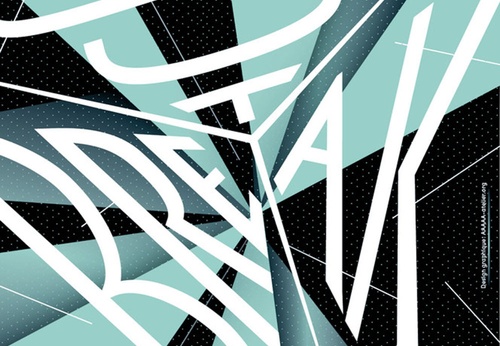


- July 04, 2025
Photography as a Tool for Telling History

- July 04, 2025
Palette Graphique Birdies and Flowers | Linda Wood

- July 03, 2025
Mexican Inspirations in the Art of Linda Wood
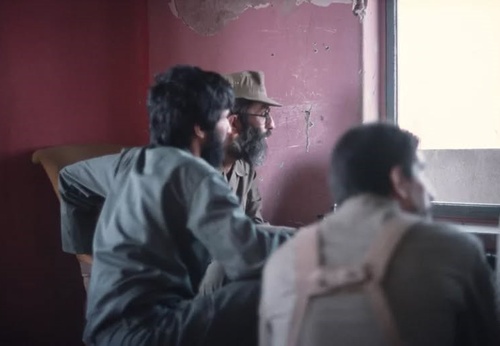
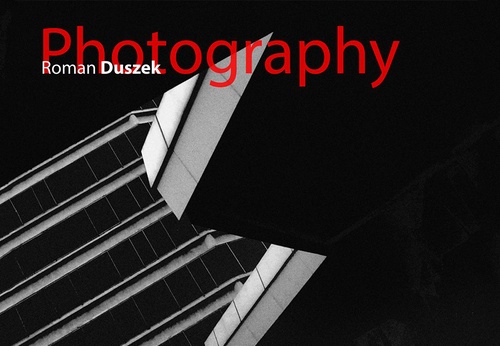
- July 03, 2025
Roman Duszek | Photography

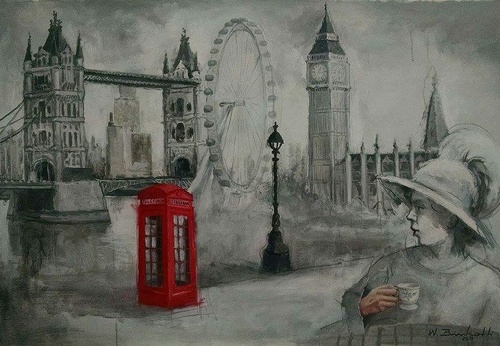
- July 03, 2025
Gallery Of Illustration By Walmir Binhotti - Brazil

- July 04, 2025
Graphic Design and Creating Iconic Bran…

- July 04, 2025
Photography as a Tool for Telling Histo…

- July 03, 2025
Painting and abstract art: differences …

- July 02, 2025
The Best Software for Digital Art and G…

- July 01, 2025
How Digital Artists Collaborate with Ar…

- July 01, 2025
Reflections of Digital Art in Different…

- June 30, 2025
Crítica de Obras Artísticas Criadas por…

- June 30, 2025
What are Plastic Arts?

- June 30, 2025
Images Against Silence: Artists Who Cha…

- June 29, 2025
History of Art Photography in the 20th …

- June 28, 2025
The 11 types of art and their meanings

- June 28, 2025
Contemporary Art is postmodern art

- June 26, 2025
Graphic Design, Art, and Technology: Wh…

- June 25, 2025
Graphic Design and Modern Content Creat…

- June 25, 2025
Art as a Manifestation of Resistance

- June 24, 2025
Latin American Art in the world

- June 24, 2025
Painting as a form of emotional express…

- June 23, 2025
14 questions and answers about the art …

- June 23, 2025
9 Latino painters and their great contr…

- June 22, 2025
The most famous image of Ernesto "Che" …

- August 29, 2023
The history of Bolivian art

- February 19, 2024
Analysis and meaning of Van Gogh's Star…

- January 28, 2024
Culture and Art in Argentina

- September 25, 2023
What is the importance of art in human …

- September 23, 2023
What is paint?

- August 10, 2023
14 questions and answers about the art …

- August 30, 2023
First artistic manifestations

- August 23, 2023
The 11 types of art and their meanings

- January 12, 2024
10 most beautiful statues and sculpture…

- September 23, 2023
Painting characteristics

- September 23, 2023
History of painting

- April 06, 2024
History of visual arts in Ecuador

- August 16, 2023
The 15 greatest painters in art history

- March 26, 2024
The importance of technology in art1

- January 31, 2024
Examples of Street Art – Urban Art

- April 07, 2024
Graffiti in Latin American culture

- January 20, 2024
What is the relationship between art an…

- March 26, 2024
Cultural identity and its impact on art…

- October 21, 2023
Contemporary art after the Second World…

- August 25, 2024
A Comprehensive Analysis of the Cartoon…

- February 19, 2024
Analysis and meaning of Van Gogh's Star…

- August 13, 2023
9 Latino painters and their great contr…

- August 10, 2023
14 questions and answers about the art …

- August 29, 2023
The history of Bolivian art

- January 28, 2024
Culture and Art in Argentina

- August 23, 2023
The 11 types of art and their meanings

- November 06, 2023
5 Latin American artists and their works

- August 27, 2023
15 main works of Van Gogh

- September 23, 2023
Painting characteristics

- September 23, 2023
What is paint?

- September 25, 2023
What is the importance of art in human …

- December 18, 2023
10 iconic works by Oscar Niemeyer, geni…

- August 30, 2023
First artistic manifestations

- January 20, 2024
What is the relationship between art an…

- March 26, 2024
Cultural identity and its impact on art…

- January 12, 2024
10 most beautiful statues and sculpture…

- October 30, 2023
Characteristics of Contemporary Art

- August 22, 2023
What are Plastic Arts?

- April 16, 2024
The most important painters of Latin Am…

- August 24, 2023


